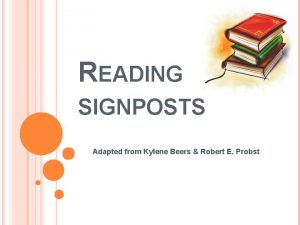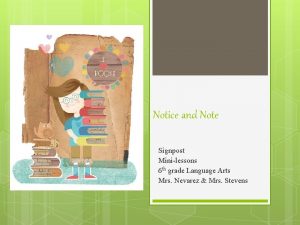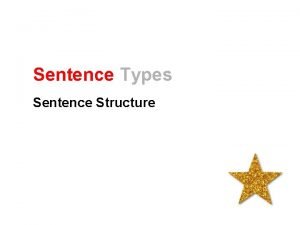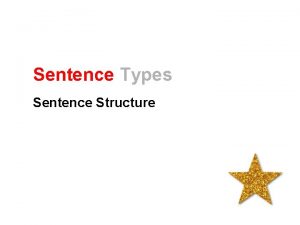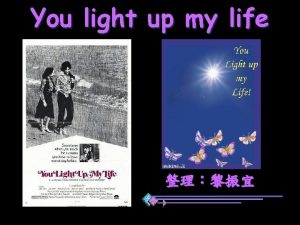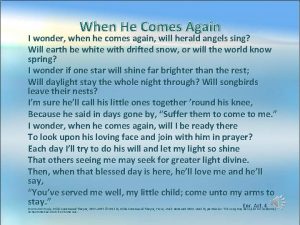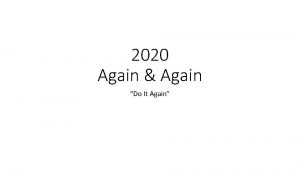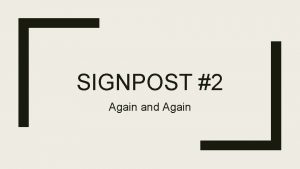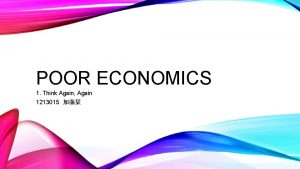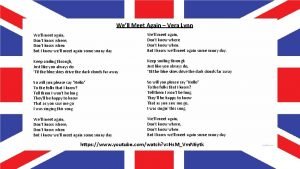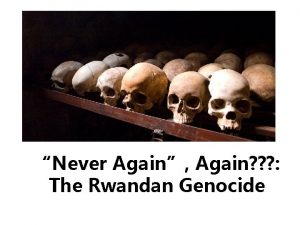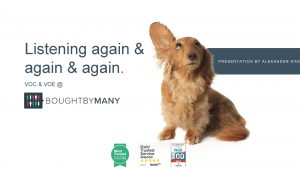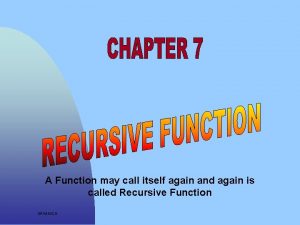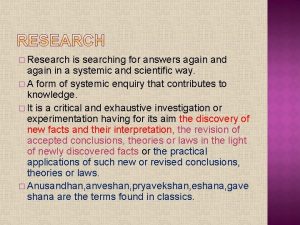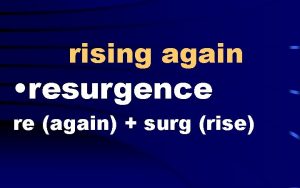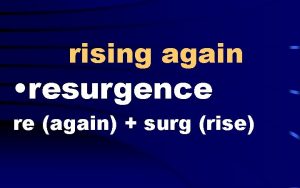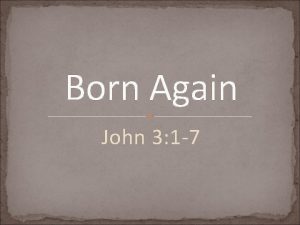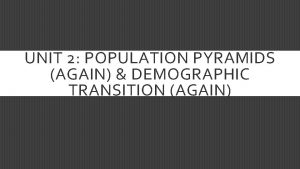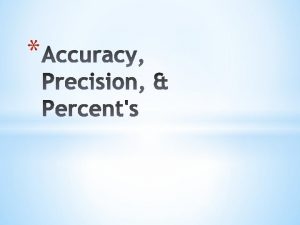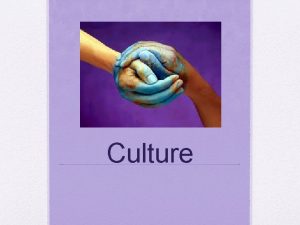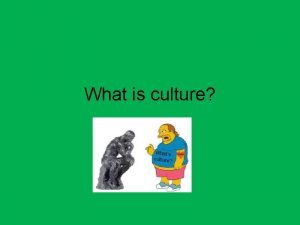What is culture again Definition of Culture Culture






















- Slides: 22

What is culture again?

Definition of Culture • Culture – all the features of a society’s way of life. Culture informs our behavior and allows us to interpret the behavior of others and the world around us. • People learn culture – Systems of meaning – language is primary – Ways of organizing society – Distinctive techniques of a group and their characteristic products

Culture • If culture is learned, then someone must teach or share it, which inevitably means that culture is in a constant state of change and evolution • Culture is symbolic- we give everything meaning- meanings differ across cultures • Culture is naturalized- it feels natural, other ways feel weird • Culture is integrated- links together different parts of our lives and creates patterns- ex: American individualism

Culture Traits • Definition: activities and behaviors that people repeatedly practice, distinctive techniques • Customs- common practices followed by people of a particular group or region • Encompasses all aspects of culture • Social organization- class, gender, race, ethnicity, government structure… • Food: U. S. - fork & knife, China – chopsticks, India– which hand? • Reference the ABCs of Culture for a list of culture traits

• • • ABC’S OF CULTURE OR BASIC ELEMENTS TO USE IN STUDYING A CULTURE APPEARANCE: clothing, jewelry, type of material, hairstyle, physical features, etc. BELIEF SYSTEM: religion, superstitions, taboos, mores, birth/death rituals, etc. COMMUNICATION: language, signs, body language, formal, informal, slang, etc. DATES: history, ancestry, heritage, holidays, etc. ENTERTAINMENT: art, music, crafts, dance, sports, storytelling, etc. FOOD: types, staples, spices, preparation, eating times, utensils, taboos, etc. GOVERNMENT: laws, values, social roles and order, gender roles, how the people act towards each other, marriage customs, etc. HOUSING: style, materials, use of rooms, shape, etc. INFORMATION: education from parents, peers, schools, formal, informal, etc. JOBS: technology, economy, ways of making a living, gender roles, etc. KIND OF ENVIRONMENT: location, climate, physical features, vegetation, etc.

Change Within a Culture • Cultures develop slowly, but are constantly changing. Cultural traits may change through time. Taboo-unacceptable behaviors Mores-acceptable behaviors • What is taboo may become a mores or vice versa. 2 concepts to understand cultural change: - Innovation - Diffusion

Innovation • New way of doing something • New ideas that are useful and valuable will last.

Diffusion • Definition – The process of knowledge, skills, and technology being spread from one culture to another. Ex: Jazz music, Sushi, Zen, Christianity, Mc. Donald’s, Ballet, Languages Diffusion can occur in different ways: examples – hierarchical diffusion, expansion diffusion

Cultural Diffusion

Acculturation • Definition – the process of one culture changing a great deal through its meeting with another culture yet remaining distinct. Adopting cultural innovations or culture traits into its own culture • Two-Way Street

Cultural assimilation is when an individual or individuals adopts some or all aspects of a dominant culture (such as its religion, language, norms, values etc. ).

Convergence and Divergence • Cultural Convergence occurs when a group accepts or adopts elements of culture from a different group or region. Examples: Colombian Exchange, Spanglish • Cultural Divergence occurs when a group isolates elements of culture due to physical or human characteristics. Examples: segregation of races in America

Culture Regions/Ethnic Groups • Definition: Culture region – an area that has many shared culture traits • One country could be a single culture region, or a political boundary may cut across a culture region- North vs. South • A culture region may also be made up of several countries such as in Latin America • Definition: Ethnic Group – a population that shares a common cultural background

Ethnicity • Who in this room belongs to an ethnic group? • We all do! • Why do we think of some people as pertaining to ethnic groups and not others? • White, protestant, middle-class is the normalized standard against which all others are judged “different” and therefore “ethnic” (stores may have “ethnic food” section)

Politics of recognition What are the “markers” of ethnic identity? language? dress? what else? phenotype? (hair, etc. ) These men are readily identifiable as Sikhs. But what about Mexican Americans?

Who imagines you as part of this group? • Identification: • Internal (yours) • Internal (to group) • External (nongroup members) • External (state)

Problematizing ethnic identification • All of these forms of identification are structured by, and structure, cultural understandings of ethnicity • Specific cultures imagine and create ethnicities • Let’s look at this through the lens of one group:

Indigenous people • In Mexico, to be indigenous you must speak a language (at a minimum) • Even if you spoke it as a child and no longer do, you are not now indigenous • What is problematic about this criteria?

Ethnic group identification • What is US criteria for indigenous group identification? – – • Descent Self recognition Tribal recognition Federal recognition Not: – Language or dress, not “looking Indian” • However, external members may question your identification – why?

Ethnicities and States approach ethnic diversity with different strategies. . . • • Segregationism Assimilationism Multiculturalism Colorblind society?

What happens when states don’t/can’t manage ethnic diversity? • Can result in “ethnic conflict”: outbreaks of violence between groups • Majority of conflict in the world post-WWII has been defined as “ethnic conflict” • However, be aware that this does not mean people just fighting amongst themselves • States and state power are often heavily involved

Example: post-colonial states • Europeans divided states according to administrative needs and desires. • Resulting states often ungrounded in local political realities. • States lumped together unrelated groups; divided communities. • Changed networks into territories. • Humpty Dumpty has just hit the ground.
 Aha moments examples
Aha moments examples Again and again signpost example
Again and again signpost example Pop songs with alliteration
Pop songs with alliteration Raise and rise again until lambs become lions
Raise and rise again until lambs become lions Wonderful words of life song
Wonderful words of life song Hunger games chapter 13 questions and answers
Hunger games chapter 13 questions and answers Ever since the big blowout she and i haven't gotten along
Ever since the big blowout she and i haven't gotten along The weather has been nice but it may snow again any day
The weather has been nice but it may snow again any day The weather has been nice but it may snow again any day
The weather has been nice but it may snow again any day Rise and rise again
Rise and rise again Write the correct order according the pictures
Write the correct order according the pictures Rule of three technique
Rule of three technique Again noah cyrus
Again noah cyrus Here i go out to see again the sunshine fills my hair
Here i go out to see again the sunshine fills my hair Inside out vocabulary
Inside out vocabulary I have visited again poem
I have visited again poem He died that i might live
He died that i might live Good evening professor
Good evening professor Until we meet again prayer
Until we meet again prayer Again
Again Again
Again 黎振宜
黎振宜 When he comes again
When he comes again
